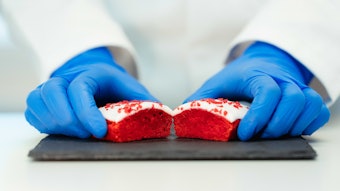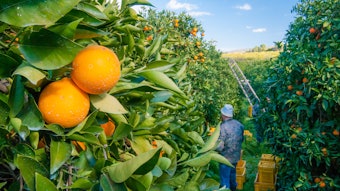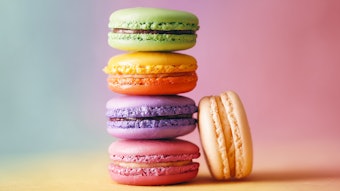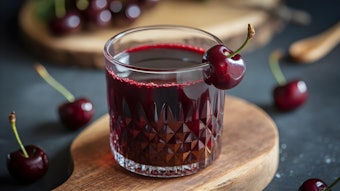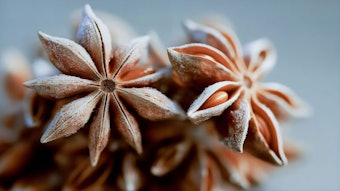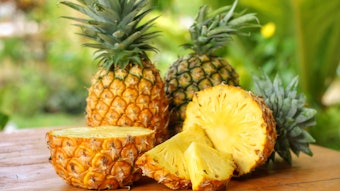Del Rio et al. (1998a) determined that the highest level of polymethoxyflavones accumulated during the developments of young citrus fruits. The same authors (1998b) observed that polymethoxyflavones might help the citrus fruit combat various fungal diseases. Del Rio et al. (2004) further studied the effect of hesperidin, isonaringin and the polymethoxyflavones (sinensetin, nobiletin, tangeretin, and heptamethoxyflavone) on resistance to brown rot lesion caused by Phytophthora citrophthora. This was demonstrated by the fact that when the citrus fruit (‘Valencia late’ in this case) were infected with P. citrophthora the hesperidin and naringenin contents dropped by 13% and 67%, respectively, while the hesperetin and naringenin (the corresponding aglycones)increased.
It was postulated that the fungus partially hydrolyzed the glycosylated flavanones while at the same time the levels of heptamethoxyflavone, nobiletin, sinensetin and tangeretin increased by 48%, 28%, 26% and 24%, respectively. This shows that the fruit possesses some naturally occurring antifungal agents, in particular naringenin and hesperitin.
Ortuno et al. (1999) suggested that the accumulation of polymethoxyflavones may be related to the maturation of citrus fruits. Bonaccorsi et al. (1999) showed that HPLC of the oxygen heterocyclic compounds in sweet orange oil could be completed in 7 min using the fast HPCL methodology. The constituents characterized were sinensetin, hexamethoxyflavone, nobiletin tetra- O-methylscutellarein and tangeretin. The same results were also published in a follow-up study in which two fast HPLC analyses of heterocyclic oxygenated compounds of orange oil were reported by Bonaccorsi et al. (2000). The potential mutagenicity of a mixture of citrus polymethoxyflavones such as nobiletin (32.5%), 3,3',4,5,6,7,8-heptamethoxyflavone (25.0%), tangeretin (14.0%), trimethyscutellarein (9.1%), sinensetin (3.9%), 5-demethylnobiletin (2.8%), hexa-O-methylquercetagetin (3.3%), 5-demethyl-tetramethylscutellarein (0.7%), 5-hydroxy- 3,3',4',6,7,8-hexamethoxyflavone (0.7%) and a small quantity of unidentified flavonoids (3.9%) was evaluated by Delaney et al. (2002) using the Ames test (Ames et al. 1975). They found that the mixture was not genotoxic in in vitro assay systems.

